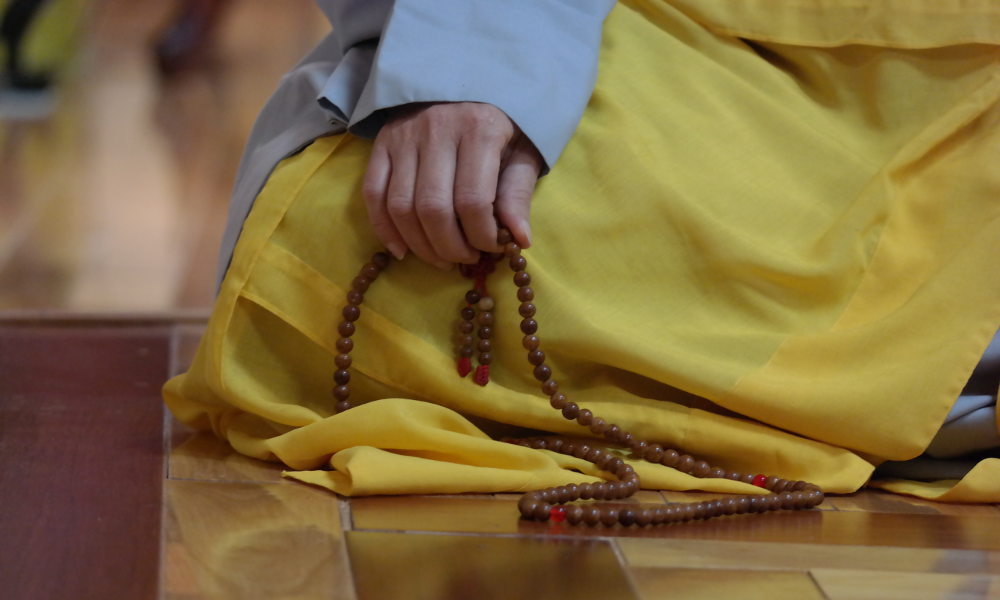Starting a Yoga Journey: Committing to meditation

For the beginning meditator, the first thing to ensure satisfaction is to find a way to sit alert and calm, the back of your body a strong tower supporting a relaxed front body for at least 20 minutes without pain or weariness. The second thing is to gain skill in self-regulating your moods through asana and breath cultivation. Physical yoga can be of great use in both projects. After that, what remains is to develop constancy; a period of formal stillness every day regardless of how you are feeling about your practice. This is the hard part for both beginners and long-timers.
Stillness groups
I have two very useful suggestions for building and maintaining constancy of practice. The first is to have a community of fellow meditators with whom you can sit once a week for an hour. To this end I have developed what I call stillness groups. A stillness group consists of people who have taken on a meditative practice. The particular tradition is not important. We welcome people with backgrounds in transcendental meditation, mindfulness, yoga, Catholicism, Buddhism or simply those without a tradition who like to sit still for a while. They all value sitting in stillness.
There is no formal instruction in these gatherings, no fees, no hierarchies of expertise. Someone volunteers to take care of organizational matters — a place to meet, communications regarding when and where – and someone agrees to keep time; to ring a bell as we begin and at 15-to-20-minute intervals to signal short breaks to walk once in a circle around our chairs/cushions. Participants may sit as they like, lie down as needed, leave early at times and are never pressured to attend.
Before and after our one-hour session, we chat casually for a few minutes, sometimes about practice but usually about other things: unspoken peer pressure, the warmth of community, perhaps something more arcane – whatever the theory behind stillness groups, they are truly a boon. It may be up to you to get one going.
Purashcharana
The other suggestion is an ancient meditative tradition in India called Purashcharana. It is a wholehearted resolve to meditate cumulatively for a very long time.
I have simplified the practice to make it more useful to modern Westerners. Rather than shaping your practice around the number of hours sat over a fixed period of time, you measure your duration by the number of attentive breathes you have taken, and continue as long as it takes to meet your intended count.
For this you need two devices. One is the familiar mala — the strand of 108 beads punctuated by a larger Meru bead and tassel. As you begin your in-breath, grip and move a bead on the mala; as you begin your out-breath, grip and move the next bead. (Shifting the action of breathing to include the manipulation of beads is also an excellent way to ground and stabilize your attention to the present moment.) One round of your mala in this way will for convenience be considered 100 attentive breaths.
The second device, a counter to record the number of mala rounds you make, is harder to come by. Hatch marks in a little notebook might do, though I have designed a handheld abacus that holds counting bead positions even when jostled. Recording your attentive breaths in this way allows you to set goals of a thousand breaths (10 mala rounds) or even a million breaths (10,000 mala rounds). Your choice may take weeks, months, even years to complete depending upon what final count you have set for yourself.
Purashcharana may seem a little mundane at first, but just as stillness groups take advantage of our innate sociability, Purashcharana takes advantage of very human, very motivating, tendencies toward acquisitiveness, goal seeking and self-recording of progress. Constancy of practice is what we are after and within the boundaries of kindness how we manage that is of little concern.
Purashcharana is an ancient yoga tradition. It is also well supported by modern behavioral science. Gradually, your meditation practice will be fueled effortlessly as well by compassion and gratitude, and then you will no longer be a beginner.
Jeff Wright, ME, E-RYT500, has taught both physical yoga and meditation in Dubuque, Iowa; Galena, Illinois; and presently Platteville, Wisconsin. If you would like more information about stillness groups or Purashcharana (including a source for mala counters) please see www.wayofstillness.com.


